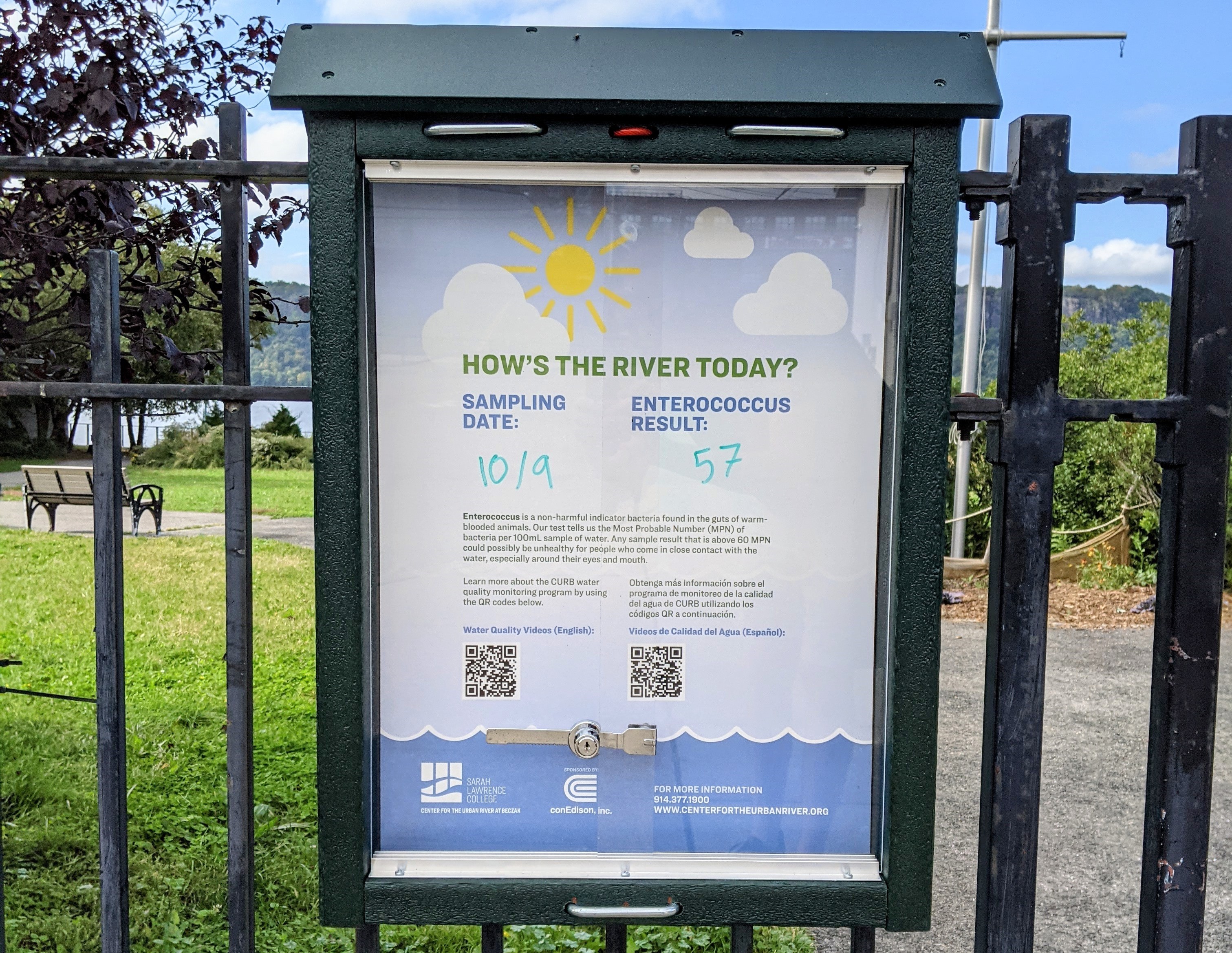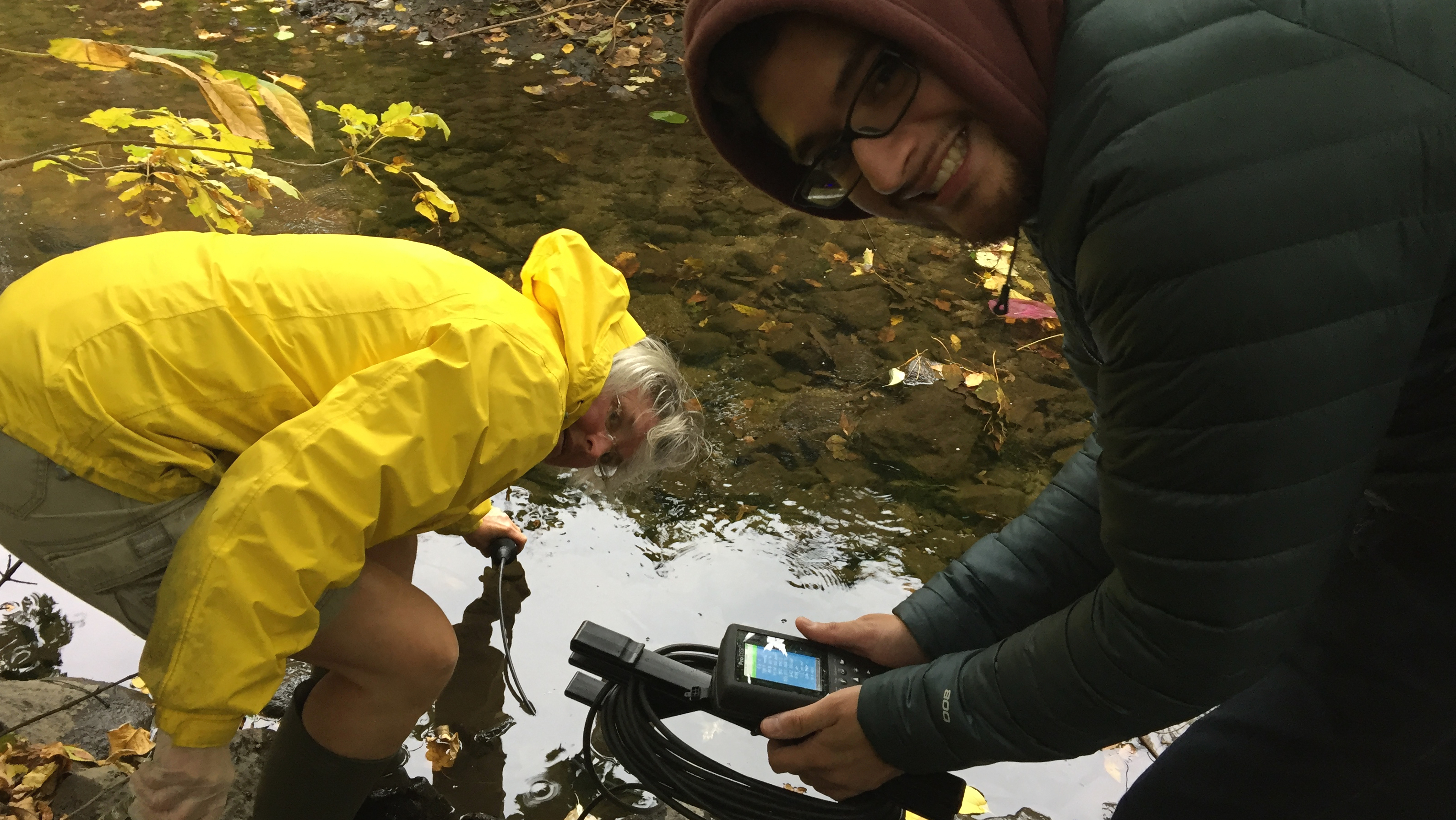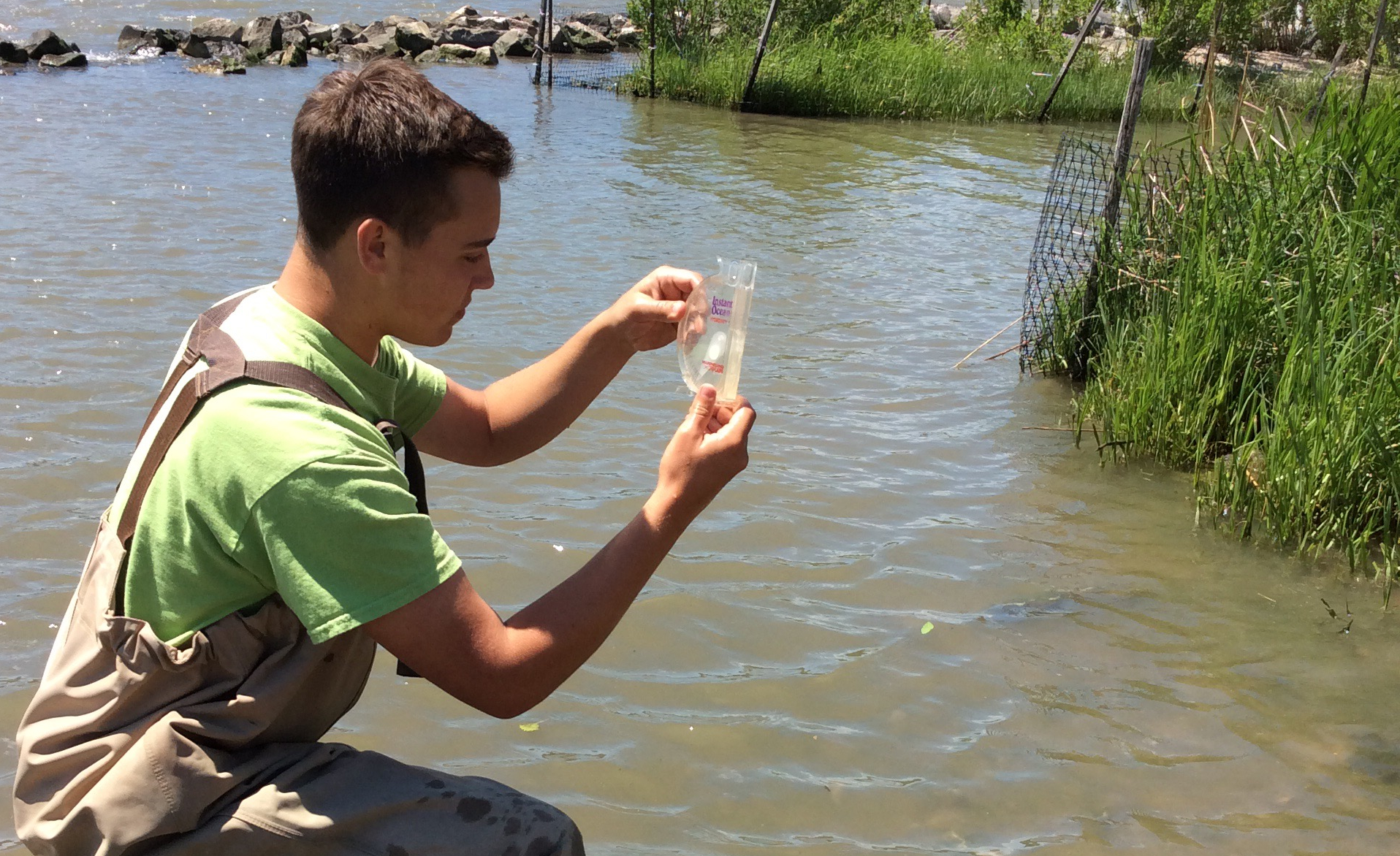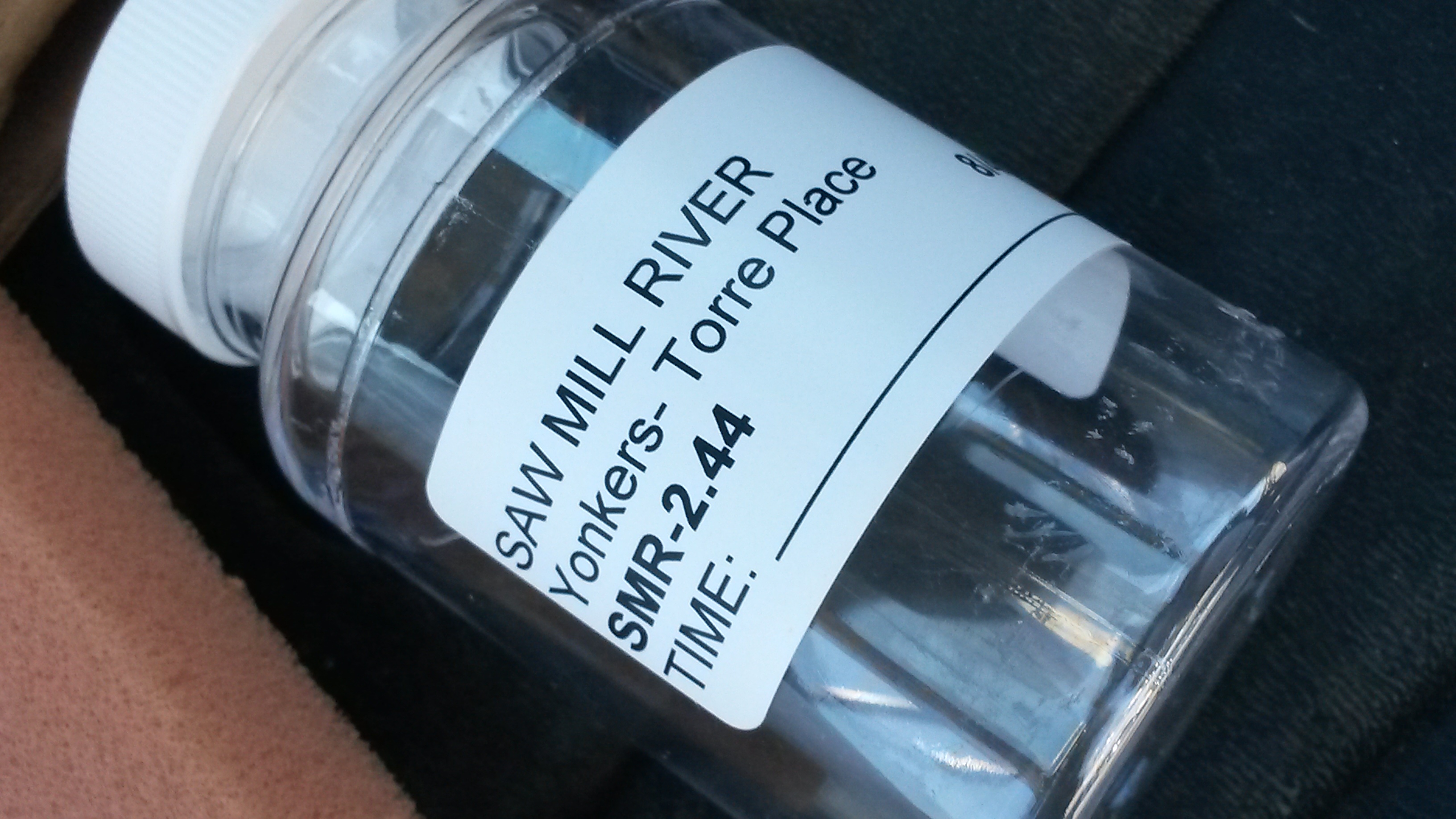Water Quality
Program History:
Since 2015 CURB has been monitoring and conducting research on sewage contamination in the Saw Mill and Hudson Rivers with a host of partners and community scientist volunteers. Every year 16 Saw Mill River sites and 2 Hudson River sites are sampled biweekly May through October (the recreation season when people are more likely to be in the water) and tested for Enterococcus, a fecal indicator bacteria used to determine water safety by governing agencies. The samples are analyzed at CURB’s lab and reported immediately to a list of 200+ stakeholders consisting of local residents, municipal staff, and elected officials, and also key county, state, and federal contacts. The results are also posted on Riverkeeper’s website, along with rainfall data, which our data shows is a huge driver of fecal contamination levels. In 2021, CURB installed a passive education sign posted at the entrance of Habirshaw Park to widen stakeholder participation to include local park goers visiting the area.

By tracking levels of fecal contamination, CURB is highlighting key issues facing water quality in Hudson River tributaries and leading the regional conversation for how to fix them. CURB joined forces with the Bronx River Alliance and Riverkeeper to form the Lower Hudson Urban Waters Collaborative in 2017, a coalition linking four local watershed communities—Saw Mill River, Bronx River, Pocantico River, and Sparkill Creek—with the joint goal of galvanizing residents through educational workshops and accessible volunteer and engagement opportunities. CURB is the unifying force in this watershed research, bringing together local grassroots organizations to collaborate on monitoring efforts, data collection, and community education.

Sewage Pollution:
A primary local issue addressed by the group research focuses on the Yonkers Combined Sewer System, which conveys municipal wastewater and stormwater in the same pipe. During rain events, instead of overwhelming the local wastewater treatment plants, the pipes overflow into waterways in what is known as Combined Sewer Overflow (CSO). CSOs in Yonkers alone contribute several hundred million gallons of wastewater into the Hudson River each year, bringing potentially dangerous contaminants into the local ecosystem and increasing health risks for people who use the river for recreation.
To learn more about the impacts of CSO’s and our volunteer sampling program, visit our video showcase available in English and Spanish.
If you are interested in joining our sampling efforts as a volunteer, let us know by emailing Science Coordinator, Katie Lamboy at KLamboy@sarahlawrence.edu or calling (914) 323-6273.
For additional information including data from the study see:
- Saw Mill River Citizen Science Water Testing
- 2015‐17 Saw Mill River Community Water Quality Monitoring Report
- 2020/2021 PEERS Saw Mill Sampling Report
Stakeholder Reports for the 2021 Sampling Season:
- 5/13 - Saw Mill River and Hudson River
- 5/27 - Saw Mill River and Hudson River
- 6/10 - Saw Mill River and Hudson River
- 6/24 - Saw Mill River and Hudson River
- 7/8 - Saw Mill River and Hudson River
- 7/22 - Saw Mill River and Hudson River
- 8/5 - Saw Mill River and Hudson River
- 8/19 - Saw Mill River and Hudson River (Data Only)
- 9/10 - Saw Mill River and Hudson River
- 9/23 - Saw Mill River and Hudson River
- 10/7 - Saw Mill River and Hudson River
- 10/21 - Saw Mill River and Hudson River
Stakeholder Reports for the 2022 Sampling Season:
- 5/12 - Saw Mill River and Hudson River
- 5/26 - Saw Mill River and Hudson River
- 6/9 - Saw Mill River and Hudson River
- 6/23 - Saw Mill River and Hudson River
- 7/7 - Saw Mill River and Hudson River
- 7/22 - Saw Mill River and Hudson River
- 8/4 - Saw Mill River and Hudson River
- 9/1 - Saw Mill River and Hudson River
- 9/15 - Saw Mill River and Hudson River
- 9/29 - Saw Mill River and Hudson River
- 10/13 - Saw Mill River and Hudson River
- 10/27 - Saw Mill River and Hudson River
- 2022 Stakeholder Review
Stakeholder Reports for the 2023 Sampling Season:
- 5/4 - Saw Mill River and Hudson River
- 5/18 - Saw Mill River and Hudson River
- 6/1 - Saw Mill River and Hudson River
- 6/15 - Saw Mill River and Hudson River
- 6/29 - Saw Mill River and Hudson River
- 7/13 - Saw Mill River and Hudson River
- 7/27 - Saw Mill River and Hudson River
- 8/10 - Saw Mill River and Hudson River
- 8/24 - Saw Mill River and Hudson River
- 9/7 - Saw Mill River and Hudson River
- 9/21 - Saw Mill River and Hudson River
- 10/5 - Saw Mill River and Hudson River
- 10/19 - Saw Mill River and Hudson River
Stakeholder Reports for the 2024 Sampling Season:
- 5/2 - Saw Mill River and Hudson River
- 5/30 - Saw Mill River and Hudson River
- 6/13 - Saw Mill River and Hudson River
- 6/27 - Saw Mill River and Hudson River
- 7/11 - Saw Mill River and Hudson River
Acknowledgment:
This program is a partnership of CURB, Riverkeeper, and the Yonkers Paddling and Rowing Club. It builds on Entero monitoring started in 2011 by the Yonkers Paddling and Rowing Club in partnership with the New York City Water Trail Association and The River Project and modeled on Riverkeeper’s ongoing monitoring projects. It also builds on previous water quality research done by Groundwork Hudson Valley, including a comprehensive study of the Saw Mill River watershed from 2008-2012. Project funding has been provided by US EPA, NYS DEC Office of Environmental Justice, and Westchester Community Foundation.


